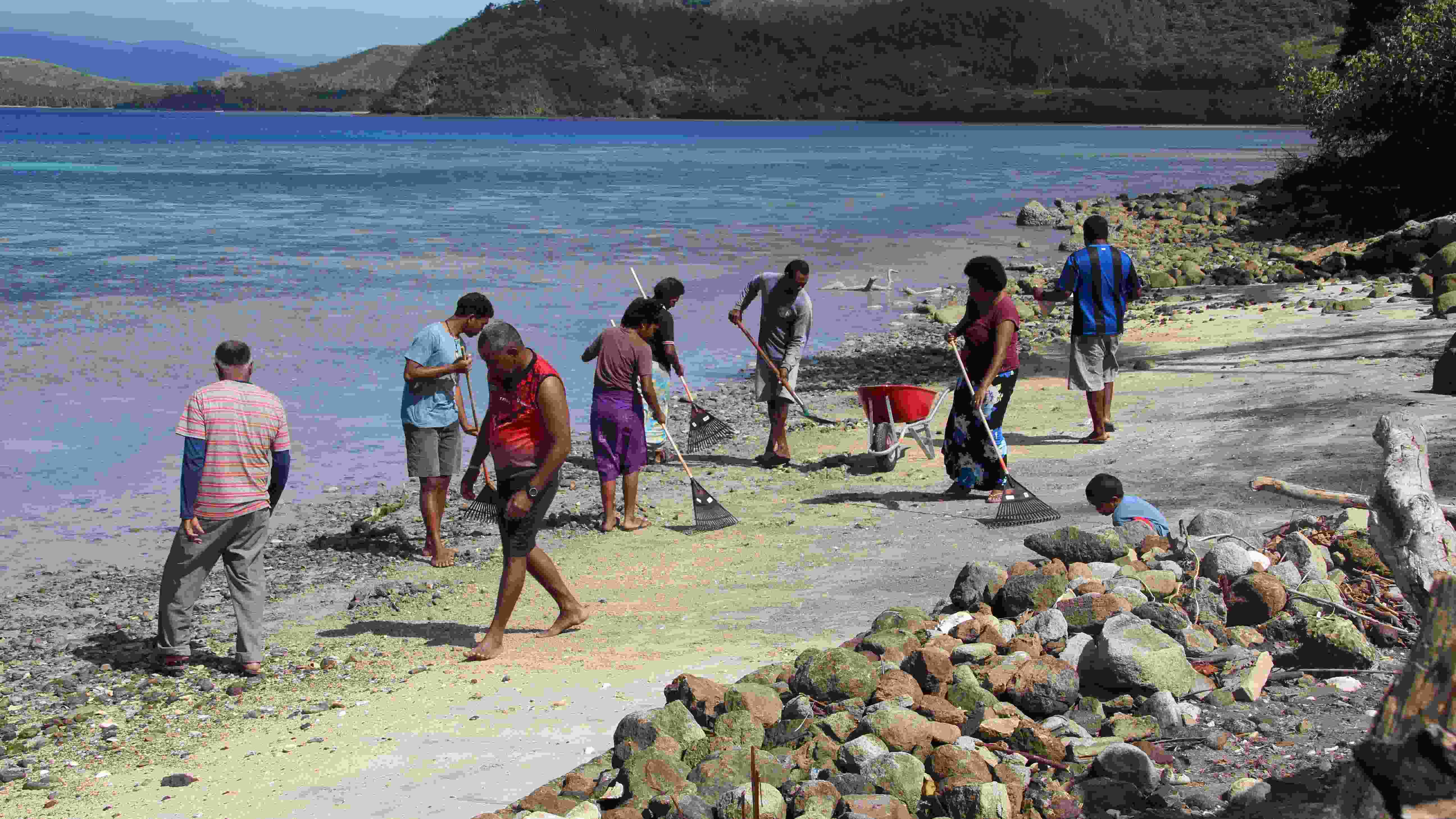
Tech & Sci
13:29, 10-Oct-2018
Sea level rise is forcing Fiji coastal villages to relocate
Updated
13:12, 13-Oct-2018
Alok Gupta

As a young boy, Kelepi Saukitoga, from Narikosa Village in Fiji, used to curiously watch his grandfather plant trees and boulders a few meters inland from the coastline. We are building a natural wall to protect the village from sea level rise, he would explain.
“Don't worry, seawater will never reach your doorstep in your or your children's lifetime,” Saukitoga's grandfather used to assure him in the 1960s. “It would take centuries.”
Today, 47-year-old Saukitoga is father of four grown-up boys and the sea level has also alarmingly grown up. Seawater is barely 10 meters from his ancestral home, and splashes of tidal waves keep hitting his doorstep.
Melting glaciers, frequent storms and unprecedented sea levels within a short frame of time are drowning small island states at an alarming rate. The natural barriers built by grandfathers to protect communities are being wiped out by rising seawater.
“It's also wiping out our memories and homes. Our entire village is shifting to another location,” he maintained during the Global Climate Action Summit (GCAS) held recently in San Francisco.
In the next few months, Saukitoga's village, comprising of 27 homes in the southern island of Ono will have a new address but with the same name. It will be located close to Kadavu Island, 88 kilometers south of Fiji's capital city, Suva.
Saukitoga's village is not the only one
Almost all small island states, located at a very low elevation, spread over 10,000 square kilometers with over half-a-million population, are at risk.
The satellite data shows the sea is slowly digesting Fiji. The sea level has risen by nearly 6 mm per year since 1993. The rate of seawater rise is higher than the global average of 2.8–3.6 mm per year.
A special report released on Monday by the Intergovernmental Panel on Climate Change (IPCC) warns only slower emissions may provide enough time for small islands to adapt to the effects of climate change.
The report provides guidelines to policymakers on the impacts of global warming of 1.5 degrees Celsius above the pre-industrial level.
"A slower rate of sea level rise enables greater opportunities for adaptation in the human and ecological systems of small islands, low-lying coastal areas, and deltas," the IPCC report maintains.
By 2100, the global mean sea level rise is projected to be around 0.1 meters lower, with global warming of 1.5 degrees Celsius compared to 2 degrees Celsius.
“Sea level will continue to rise well beyond the year 2100, and the magnitude and rate of this rise depends on future emission pathways,” the report added.
For small islands, with soaring temperatures, time to relocate seems to be running out.
“Right now seawater enters seven of our homes in the red zone, a severely flood-prone part of the village,” Saukitoga said. “Sometimes these homes are under four meters of water when the king tide comes.”
Cost of shifting
Frequent storm surges and flooding from tidal waves are also destroying the village's infrastructure, agriculture and culture.
Villagers are forced to move traditional crops and vegetables further inland. They are also shifting locally grown fragile medicinal plants and herbs before seawater destroys them.
A World Bank assessment calculates that Fiji needs to spend 4.5 billion US dollars in the next decade to combat rising sea levels and storms. The money is equivalent to the annual gross domestic product (GDP) of the country.
Construction of houses, livelihood programs, and development of irrigation, to relocate just Narikoso Village and Waciwaci District School is costing around 800,000 US dollars. The country is preparing to move 40 such villages, according to Fiji’s government.
Regrettably, the global community does not understand the financial constraints of small islands, Mia Amor Mottley, prime minister of Barbados, says.
“They continue to exclude countries like ours from borrowing funds from the World Bank. They argue our per capita income is equal to middle-income countries,” she explains.
“But our vulnerability is such that in 24 hours, the entire condition changes with one storm.”
Narikoso is likely to change its coordinates in the next few months. Saukitoga, father of four boys and soon expecting another, fears his newborn will never be able to see his grandparent's ancestral place.
“We are all in the same canoe, so let's row together and maintain the momentum of the 2015 Paris Agreement to lower the global temperature,” Saukitoga said to policymakers, technology giants and government officials attending the conference.
(Top Image: Villagers in Narikoso strengthen coastal areas to prevent seawater from entering their homes. /Josephine Prasad/GIZ Photo)

SITEMAP
Copyright © 2018 CGTN. Beijing ICP prepared NO.16065310-3
Copyright © 2018 CGTN. Beijing ICP prepared NO.16065310-3